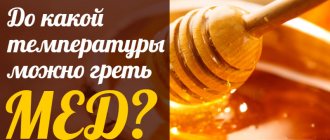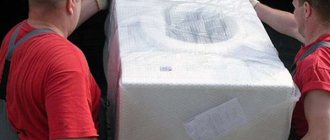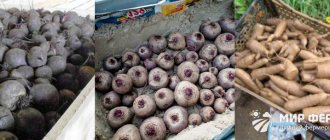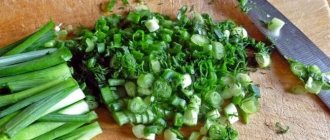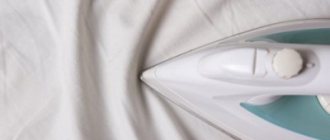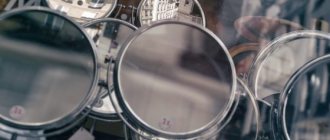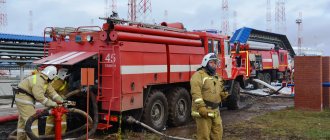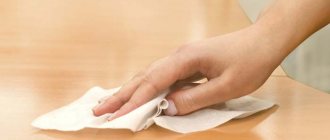Compost: suitable waste and components
If you want to create a compost pile, the waste used is important to the decomposition processes. The rotting process can only work if there is a sufficient amount of quickly and easily decomposed mass. For this reason, preference is given to certain types of waste that should go into the compost heap first:
- Leftover fruit and fallen fruit
- Leftover vegetables
- Seaweed
For a compost heap, leftover fruits and vegetables should be kept raw. They rot very quickly and are one of the main components of compost. The algae should not be too wet unless the compost is too dry. They should not be placed on the surface, but under it, as the algae dry out quickly. In fact, you can use any algae, whether it's the kind from your pond or Nori from an expired package. They just shouldn't be cooked with oil or spices. A large amount of garden and plant waste is allowed. Whole plants should not be placed in the compost heap; they must be crushed.
Below is an overview of suitable plant waste:
- Foliage
- Grass clippings (ideally not wet)
- Cut parts of woody plants
- Flowers
- Balcony plants
- Houseplants
Note: Don't worry, you can even add poisonous plants to your compost pile. They do not pose a health hazard, since the toxins are completely decomposed into harmless substances.
Conditionally suitable waste for composting
In addition to the waste that can easily be put into a compost pile, there is a whole list of ingredients that you should only use in small quantities to rot. They tend to decompose more slowly or overcrowd the pile if you put too many of them into the compost at once.
The following list provides an overview of components that should only be added in measured doses:
- Egg shells (be sure to chop or grind)
- Coffee grounds and filters for organic coffee
- Tea bags
- Herbaceous plants (no seeds)
- Wood ash
- Sawdust
- Cardboard, paper
- Kitchen or toilet paper (no chemical bleach)
- Paper handkerchiefs
- Remaining straw
- Old soil from potted plants (must not be rotten)
- Herbivorous pet excrement
- Excrements of herbivorous farm animals
Rules for good compost
As in every useful undertaking, before starting a compost heap, you need to decide on the stages of its proper creation.
- Determine the place where it will be located: preferably away from fruit trees. As for the rest, it’s more a question of the aesthetic appearance of the site.
- Select a container for storing useful waste. Which one is better to use? The easiest way to make a compost pit is using ready-made specialized plastic tanks. Or you can make the container yourself, and it’s even better and cheaper. For such a case, the following options are suitable:
- deep wooden boxes;
- an earthen pit dug about half a meter deep;
- concreted or cemented pit with air holes.
Rules for obtaining high-quality and healthy compost:
- If there are soil characteristics: containing a significant proportion of sand or clay, it is necessary to balance its properties by adding clay to the sand at the base of the hole, respectively, and vice versa.
- To regulate the degree of humidity in the thickness of the heap, you need to place small tree branches in the hole as the first layer, which will allow excess water to escape. In addition, pieces of bark and sawdust are suitable for composting. Then you can put fresh ingredients: cabbage leaves (unaffected by anything), nettles, tops in the weed compost without flowers and roots. Avoid throwing tomato and potato tops into the compost heap.
- The compost mixture must be ventilated. Therefore, air access is required. To do this, holes are made in the cement frames and a gap is left between the boards of the wooden boxes. In addition, the compost heap must be stirred periodically and not compacted in order to save space in the container.
Unsuitable waste for compost heaps
The amount of waste unsuitable for composting is large. These are materials that rot poorly or not at all, enrich the pile with pollutants or attract pests. They are not suitable for compost and must be disposed of properly. In any case, the following waste is prohibited:
- Meat
- Fish
- Bones
- By-products
- Boiled or raw eggs
- Sausages
- High protein foods such as cheese
- Other dairy products
It doesn't matter whether you throw them away boiled, fried or raw. They contain large amounts of proteins and fats that do not rot. Due to the development of a strong odor, leftover food attracts rats, mice and other pests.
Another problem with compost is leftover dishes and baked goods. Bread, cakes or bad lasagne should only be disposed of with household waste and should not be thrown into the compost heap.
Avoid composting the peels of the following fruits due to the use of high levels of pesticides:
- Bananas
- All citrus fruits
- A pineapple
- Other tropical fruits
- Melon
Unfortunately, tropical fruits are rarely completely free of pesticides. For this reason, as a precaution, always throw them away with your household waste.
There are a number of wastes that have no place in a compost heap. They must be disposed of with household waste, as they either contain harmful substances, or do not rot, or slow down the decomposition processes:
- Ash (lumps)
- Cat litter (clumps)
- Cut flowers
- Paper, cardboard or magazines with full color printing
- Newsprint (black and white printing)
- Difficult-to-rot leaves (you can shred them first)
- Vacuum cleaner bags
- Diapers
Note: Do not compost waste such as glass, metal, composite packaging materials or plastic. Batteries, oils, paints, drug residues and, of course, chemicals are also prohibited, as they can contaminate the soil and groundwater.
What should not be put in a compost bin and why?
Making garden compost is considered a simple matter. It would seem that it would be easier to throw all the plant residues there. But this is not true at all.
Unsuitable and prohibited raw materials for compost
There are types of waste that should not be thrown into a compost bin:
- Synthetic elements that practically do not decompose (glass, plastic, polyethylene, artificial fabrics, rubber, etc.), as well as plant waste that is difficult to rot (fat, leather, large bones, etc.).
Solid household waste should not be placed in compost.
- Vacuum cleaner bags, air filters, etc. All of this contains harmful chemical components and synthetic particles used in everyday life (air conditioners, air fresheners, etc.).
- Bright glossy advertising brochures, magazines, newspapers, tobacco cigarette butts, since they contain heavy metals (lead, etc.).
- Any organic objects that have undergone any treatment with chemicals (paint, turpentine, gasoline, solvent, etc.).
- Lime or ash, as they strongly alkalize the compost.
- Very fatty food scraps. Such components weigh down and significantly slow down the maturation of the contents of the compost heap.
- Residues from furniture production (chipboard, fibreboard, etc.) and construction waste (plasterboard, etc.). In their production, aggressive toxic impregnations are used.
- Plant residues showing signs of infection with diseases, fungal infections and insect pests (spoiled potatoes, rotten apples, tomato and potato tops, cucumber vines, etc.). The infection persists for a long time in rotting residues, and then spreads throughout the area along with the finished fertilizer.
Trimmed strawberry leaves, potato and tomato tops are not put into compost, since various pathogens and pests remain on these plant debris
- Rhizomes of perennial creeping weeds (wheatgrass, loach, etc.), as well as mature weeds with flowers and seeds, because in favorable soil all this will grow.
- Leftover food, especially meat and fish, as they attract rodents and other lovers of free food.
- Large wood debris (boards, branches, trunks, etc.). They rot for a long time, delaying overall ripening.
- Any feces (human, carnivorous domestic animals), except herbivores, because it often contains worm eggs and the parasites themselves.
- Citrus peels (tangerine, lemon, etc.) and some toxic plants (lily of the valley, henbane, castor bean, foxglove, etc.). The toxic substances they contain are harmful to microorganisms involved in composting.
- Used tea or coffee bags. Only their contents are shaken out into compost; synthetic fibers in the compost heap are not processed.
- Spoiled stone fruits (plum, cherry plum, peach, etc.), nuts. Large seeds and shells take a long time to rot (they may even germinate).
- Dry leaves and stems of cereal crops. They take quite a long time to decompose.
It is better to put dry leaves in the compost separately, because they take a long time to rot.
Some gardeners believe that the uninfected above-ground parts of plants can be put into compost (tomato tops, strawberry leaves, etc.).
I never throw food scraps into my compost pile, as this immediately attracts all the neighbors' cats and dogs (if they are lucky enough to get over the fence safely), as well as large birds (including birds of prey, such as kites).
Substances that accelerate the maturation of compost, but spoil it
The process of ripening compost is long, and I want to speed it up. However, under no circumstances should substances be used for septic tanks, cesspools and toilets, since most of them are chemical . Toxic components kill beneficial microorganisms and worms, and also make the fertilizer itself toxic. It is much safer to use special means - EM preparations (Shine, Tamir, Baikal, etc.).
There are traditional methods that speed up the preparation of compost. To do this, water the pile with sweet water with yeast (0.1 kg of yeast per bucket, 0.3 kg of sugar or old jam) or urea solution (50 g per 10 l).
FAQ
When should you not compost green waste and crop residues?
In case the plants are sick. Whether it is green waste or tree trimmings, it should not be contaminated with bacteria, viruses or fungi. Pathogens can continue to spread in the garden, which is a particularly big problem with fungal diseases.
What weeds should not be added to compost?
If you remove flowering weeds, the flowers usually contain developed seeds. Seeds are able to spread throughout the garden from the compost heap, meaning the weeds cannot be removed permanently. On the other hand, rhizomatous weeds continue to grow in the compost and are therefore also completely unsuitable for composting.
Can I add food scraps to my compost pile?
Food scraps, except for the waste and fruits prohibited for composting listed above, are allowed to be added to the compost heap. We are talking, for example, about pasta, cereals, etc. During the summer and autumn, everything rots. During this period, you should turn the contents of the pile several times along with the ash.
What should you consider before composting?
In order for individual components to rot easily, they must be small enough. In the case of food scraps this is usually not a problem, whereas larger wastes need to be shredded. Cuttings, suitable potted plants or cardboard should be cut or torn into pieces no larger than 50mm. This way they rot faster.
How to properly lay layers for compost?
Compost heaps should not be compacted. For this reason, start with a layer of twigs, twigs and woody trimmings enriched with mature compost. This is followed by a layer of dry branches, as well as leaves or mowed lawn grass. The top layer consists of permitted food and garden waste. You can add garden soil or compost soil between layers.
Compost heap care
Whether the compost will have time to mature in a year and whether it will turn into a full-fledged fertilizer depends on following the rules for caring for it. The site owner needs to do the following:
READ ALSO: Top 10 drugs that stimulate flowering and increase yield
- In order for the fermentation process to start on time, and the ingredients not to become covered with rot or fungus, you cannot dump all the organic matter into a disorderly heap. The components must be laid so that dry and wet layers alternate.
- The thickness of the layer of green plants should be approximately 20 cm, household waste - 15 cm, other products - 15 cm.
- Once a month, the compost heap should be thoroughly mixed so that the organic matter is loose and saturated with oxygen. In this case, it will burn out and not rot.
- It is necessary to control the moisture content of the mass. When it dries out, you need to water it. However, excess water is also undesirable: it will have a bad effect on the activity of the bacteria responsible for composting, so during heavy rainfall the pile should be covered with plastic wrap.
As a result of all efforts, you can get mature or immature compost. The first type is dark and uniform, with a pleasant earthy smell. The second one consists of individual particles that did not have time to decompose. Everything is clear with the first one - it is suitable for any purpose. But unripe ones can also be used by laying them in the base of beds on clay soils.
